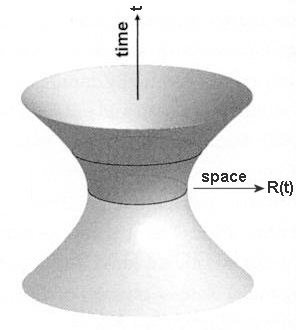
 G
G R2 / 3 +
R2 / 3 +  R2 c2 / 3
R2 c2 / 3 where R(t) is the scale factor related to the size of the universe,
 the cosmological constant. It can be expressed in term of the corresponding density
the cosmological constant. It can be expressed in term of the corresponding density 
 by the formula
by the formula  = 8
= 8 G
G
 / c2. Assuming a flat universe, current observations of distance supernovae, the cosmic microwave background radiation, and the dynamics of galaxies together favor a value of
/ c2. Assuming a flat universe, current observations of distance supernovae, the cosmic microwave background radiation, and the dynamics of galaxies together favor a value of 
 = 0.7
= 0.7  c, the numeric value for
c, the numeric value for  is about 1.3x10-56 cm-2. Past attempts to identify the cosmological constant with the vacuum energy of the various quantum fields was not very successful. See "Vacuum Energy Density" for a 2015 update. The effect of the cosmological constant on the cosmic expansion is summarized in Figure 10h.
is about 1.3x10-56 cm-2. Past attempts to identify the cosmological constant with the vacuum energy of the various quantum fields was not very successful. See "Vacuum Energy Density" for a 2015 update. The effect of the cosmological constant on the cosmic expansion is summarized in Figure 10h. Ht
Ht

 -
- from a singularity. It reaches a size of Ro at t = 0, and expands to infinity as t
from a singularity. It reaches a size of Ro at t = 0, and expands to infinity as t  . Its size shrinks to zero at t = 0. There is no solution for negative t as R also becomes negative.
. Its size shrinks to zero at t = 0. There is no solution for negative t as R also becomes negative.